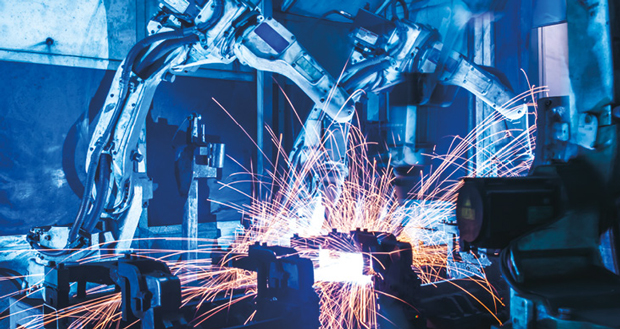Paul Walsh, General Manager – EMEA at CIM, looks into the role a smart building analytics strategy can play in managing high energy using industrial sites
The everyday burden of keeping large life sciences and micro-electronics manufacturer sites as efficient as possible often falls to facilities management teams. But the impact of recent ongoing global crises is hard to ignore, and industry sources are warning that electricity prices may see costs up to 60 per cent more than on the continent.
Many UK tier 1 large manufacturing companies have announced their intention to achieve carbon neutrality, but delivering on this commitment will prove uniquely challenging for leadership and facility management teams in energy-intensive, hi-tech factories. This is especially pressing with decarbonisation targets and the UK’s notoriously high industrial electricity £/kWh in mind, which is set to be impacted further by ongoing geopolitical events.
Regulations around this pressing issue have become increasingly stringent, with the Government’s 2019 pledge of net-zero carbon emissions by 2050 tightened further as a roadmap is built to a greener future. Governmental legislation adopted from the Climate Change Committee’s Sixth Carbon Budget advisory report, which proposed emissions reductions of 75 per cent by 2035, is a good example of this increasingly ambitious, but no less painful, approach to decarbonising operations.
INSUFFICIENT C-SUITE SUPPORT
Facilities managers at the sharp end of these issues are not receiving the support required to reduce consumption in areas such as HVAC systems, which can account for circa 40 per cent of a site’s overall energy consumption. Indeed, according to recent research commissioned by building analytics specialists CIM and published in their new report, The Energy Blind Spots, only 35 per cent of facilities managers at Tier 1 manufacturers felt that energy efficiency was a high priority to the C-Suite.
Additionally, 54 per cent of FMs felt that HVAC costs are being recognised by senior management, but to really achieve net-zero commitments and improved energy performance while remaining competitive, site leadership teams need to prioritise efficiency programs on HVAC plant and critical equipment.
The importance of addressing HVAC efficiency becomes even greater still when considered alongside additional findings from CIM’s research, where 87 per cent of respondents stated that CAPEX constraints were a major barrier to improving energy performance. This highlights the need to realise OPEX savings through means such as actionable, data-informed building insights.
PERPETUAL FIREFIGHTING
With insufficient support from senior leadership teams, FMs may end up in a cycle of perpetual firefighting, constantly addressing issues arising from building management system (BMS) alarms. Moving these personnel from a reactive to a proactive footing will be key to ensuring energy-intensive manufacturers are best placed to handle soaring bills and increasingly demanding sustainability commitments.
This reality is further underlined in CIM’s research, which found that less than one-third of facilities managers surveyed (29 per cent) were continually monitoring carbon emissions. These findings were in spite of the fact that 63 per cent of respondents’ sites had been certified to the ISO 50001 standard for energy management. Considering that 62 per cent of respondents also believed they were deficient in their day-to-day collection of key BMS data, a picture is further painted of under-pressure and misdirected facilities teams and enhanced requirements for support with building and data monitoring.
ALARM FATIGUE
The volume of data that BMS and critical equipment can produce is understandably overwhelming, which can lead to the phenomenon of ‘BMS alarm fatigue,’ in which FMs inundated by constant alarms may become less likely to address these alerts. As a result, a further barrier is erected against mitigating skyrocketing energy costs and decarbonising operations. This is seen in CIM’s findings, where 27 per cent of respondents said all BMS alarms go unactioned as they receive too many notifications.
EFFECTIVE UNDERPINNING
Fortunately, technological innovation is already occurring to address this concern, with building analytics platforms being developed that ingest live building data. By applying machine learning and automated Fault Detection diagnostics these platforms can provide predictive and proactive insights and actions. Alongside verifying that improvements do not degrade over time, the most innovative of these systems are also monitored by HVAC mechatronic and electrical engineers, ensuring workloads are prioritised towards actions that will achieve the strongest outcome and savings.
With these platforms and steps taken, facilities managers can go beyond the previous reactive, or ‘fix-and-forget’ approach that can leave them in a constant loop of running repairs, and unable to best action larger strategic steps to improve overall efficiency and sustainability. Instead, they can now be in a better place to address outside concerns such as advancing decarbonisation targets and rising energy costs. Tackling these OPEX concerns could therefore help turn mountains back into molehills as far as CAPEX constraints on energy-efficient equipment are concerned.
By taking the comparatively minor step of deploying a smart building data strategy, key stakeholders could spark the beginning of a virtuous circle, in which interdependent areas – sustainability, competitiveness, and energy efficiency – inspire ongoing improvement. Consequently, an under-pressure sector and its personnel can be more effectively braced against further disruption in the future.
For more information on CIM’s new report, The Energy Blind Spots, visit https://cim.io/documents/energy-blind-spots/





